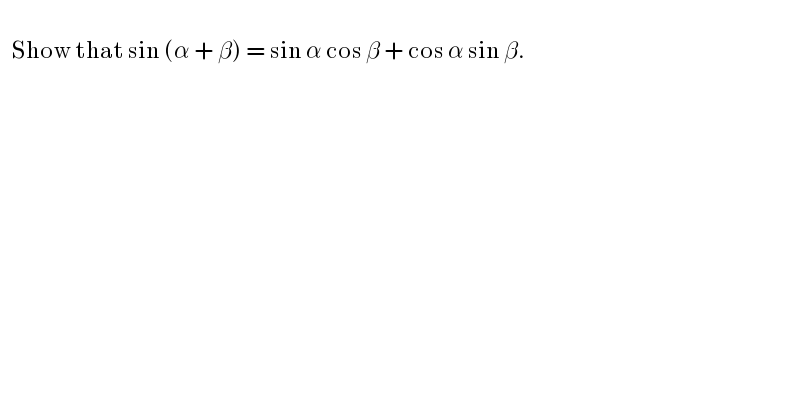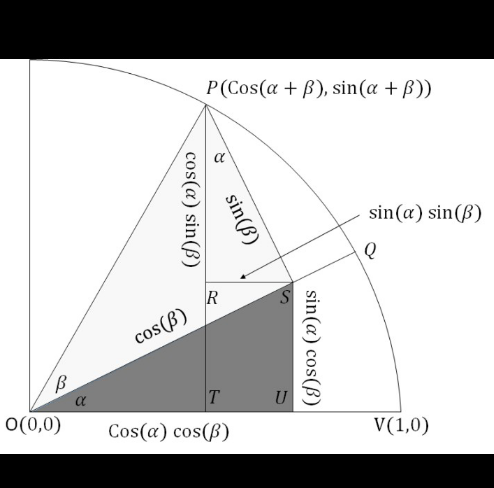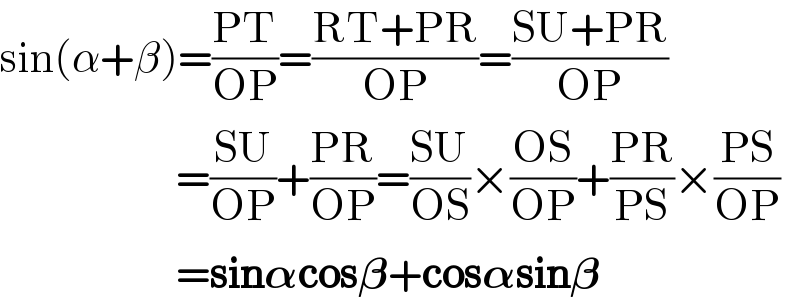
Question and Answers Forum
Question Number 115765 by aye48 last updated on 28/Sep/20

Commented by bemath last updated on 28/Sep/20

Commented by aye48 last updated on 28/Sep/20

Commented by Ar Brandon last updated on 28/Sep/20

Answered by MJS_new last updated on 28/Sep/20
![remember sin x =((e^(ix) −e^(−ix) )/(2i))=−(i/2)(e^(ix) −(1/e^(ix) )) cos x =((e^(ux) +e^(−ix) )/2) ⇒ sin (α+β) =−(i/2)(e^(iα) e^(iβ) −(1/(e^(iα) e^(iβ) )))= [let e^(iα) =p∧e^(iβ) =q] =−(i/2)(pq−(1/(pq)))= [now the trick:] =−(i/4)(2pq−(2/(pq)))= =−(i/4)(2pq−(2/(pq))+((p/q)+(q/p))−((p/q)+(q/p)))= =−(i/4)((pq+(p/q)−(q/p)−(1/(pq)))+(pq−(p/q)+(q/p)−(1/(pq))))= =−(i/4)((p−(1/p))(q+(1/q))+(p+(1/p))(q−(1/q)))= =−((i(p−(1/p)))/2)×((q+(1/q))/2)−((p+(1/p))/2)×((i(q−(1/q)))/2)= =((e^(iα) −e^(−iα) )/(2i))×((e^(iβ) +e^(−iβ) )/2)+((e^(iα) +e^(−iα) )/2)×((e^(iβ) −e^(−iβ) )/(2i))= =sin α cos β +cos α sin β](Q115767.png)
Commented by Dwaipayan Shikari last updated on 28/Sep/20

